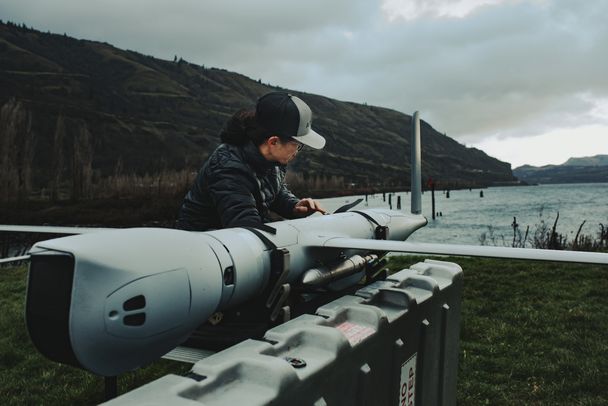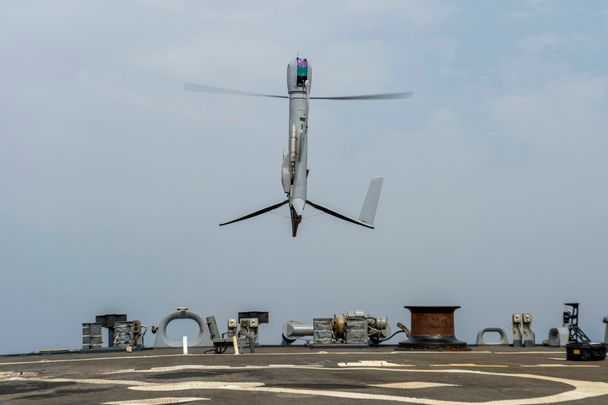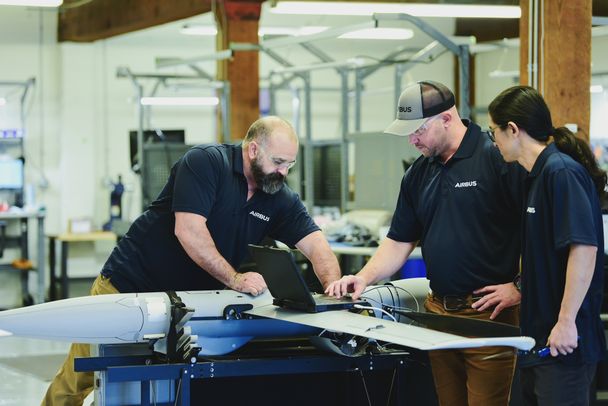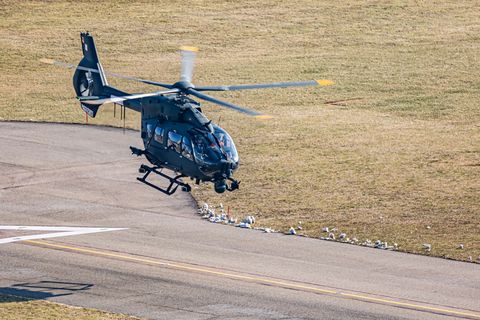Flexrotor: the 25kg force multiplier

The Flexrotor unmanned aerial system is Airbus’ newest addition to its UAS portfolio. Its vertical take-off and landing (VTOL) and long endurance are just two features to love—and there’s more.
Respect and admire our militaries, fire brigades, coast guards and security forces for keeping us safe in hazard-laden scenarios: choking smoke, bitter darkness, armed threats. But what if a second team were there to assist—one that’s unmanned and impervious to risk? One with an 8 kg payload capacity and 14- to 30-hour autonomy. One that’s carrying an infrared camera, sensors, and a communications relay.
Meet the Flexrotor unmanned aerial system (UAS). In a move to bolster its range of tactical unmanned solutions, in May Airbus acquired the US-based company, Aerovel, and with it, the Flexrotor.
Up, down and sideways
Designed for intelligence, surveillance, target acquisition and reconnaissance (ISTAR), the Flexrotor is notable for its vertical takeoff and landing capability from a launch area measuring just 3.7 x 3.7 m. From there, its tilt-rotor design tips its 2-m body easily from vertical to horizontal mode, where it cruises on a 3-m wingspan. All this while endowed with an 8kg payload in its compartments. There’s no doubt Flexrotor is changing the game by operating without the need for launch-recovery equipment. “It can easily be transported in one vehicle in a nice, streamlined package,” says Ron Tremain, Executive Director of Coast Guard affairs and UAS advisor at Airbus Helicopters. This means Flexrotor can be employed in the field, launched from confined decks or even used aboard small patrol boats… and more besides. “Flexrotor is able to be an aviation asset to operators in locations never considered before, such as equipping patrol boats with a long-endurance UAS,” says Tremain.

Teamwork gets the job done
Over 100 types of payload – everything from a methane detector (to monitor polar ice melt) to a WIFI hotspot – combined with its 14-hour average endurance give the Flexrotor all the criteria for governmental and parapublic missions. Moreover, it can accommodate new technologies as fresh innovations emerge. In short, customers choose the payload according to their mission, be it a camera to track fast-moving targets, or ground or sea sensors for intelligence gathering.
Further, as the latest entry in Airbus’ ranks, it is now a prime candidate for manned-unmanned teaming with the Company’s aviation and defence products. The remotely controlled UAS can be deployed alongside a helicopter, for example, to search a larger area, ascending to a safe altitude as the rotorcraft performs the rescue. Fighting wildfires, it can relay real-time infrared imagery to flight crews for precision drops—or even launch at first light to map the fire’s progress. “If you have a Flexrotor out there providing imagery back, you’re better prepared mentally,” says Tremain.
With the acquisition, Airbus is not only expanding the Flexrotor’s reach with the possibility of interoperability with its range, it is also exposing the UAS to a global array of markets. Armed forces; coast guards, ship navigation and ice patrol; marine life monitoring; humanitarian operations; law enforcement; power line, railroad and pipeline surveillance— all are within its purview. With the means to rapidly industrialise, apply new technologies and introduce wider capabilities, Airbus has become, in effect, the Flexrotor’s very own force multiplier.




